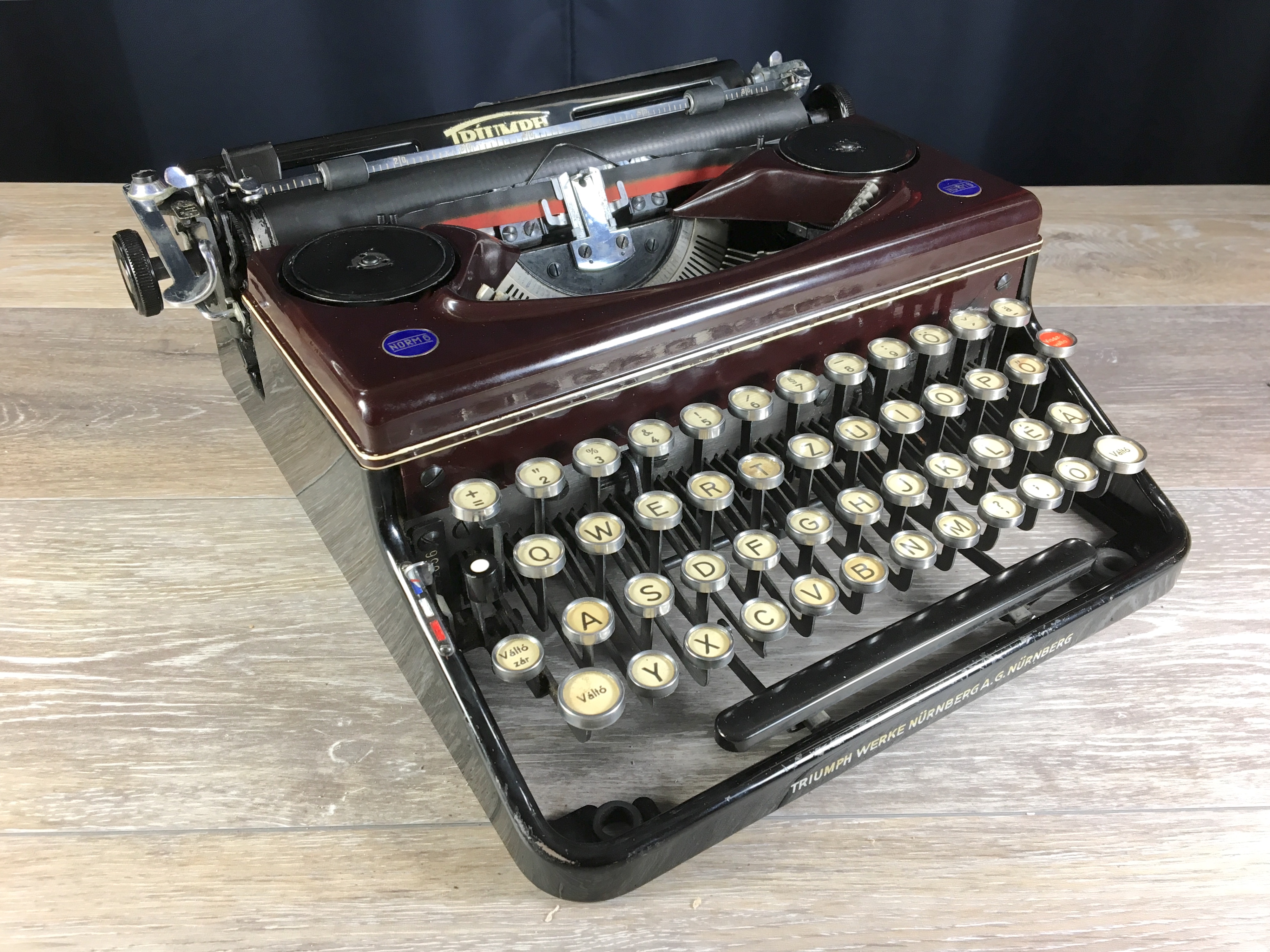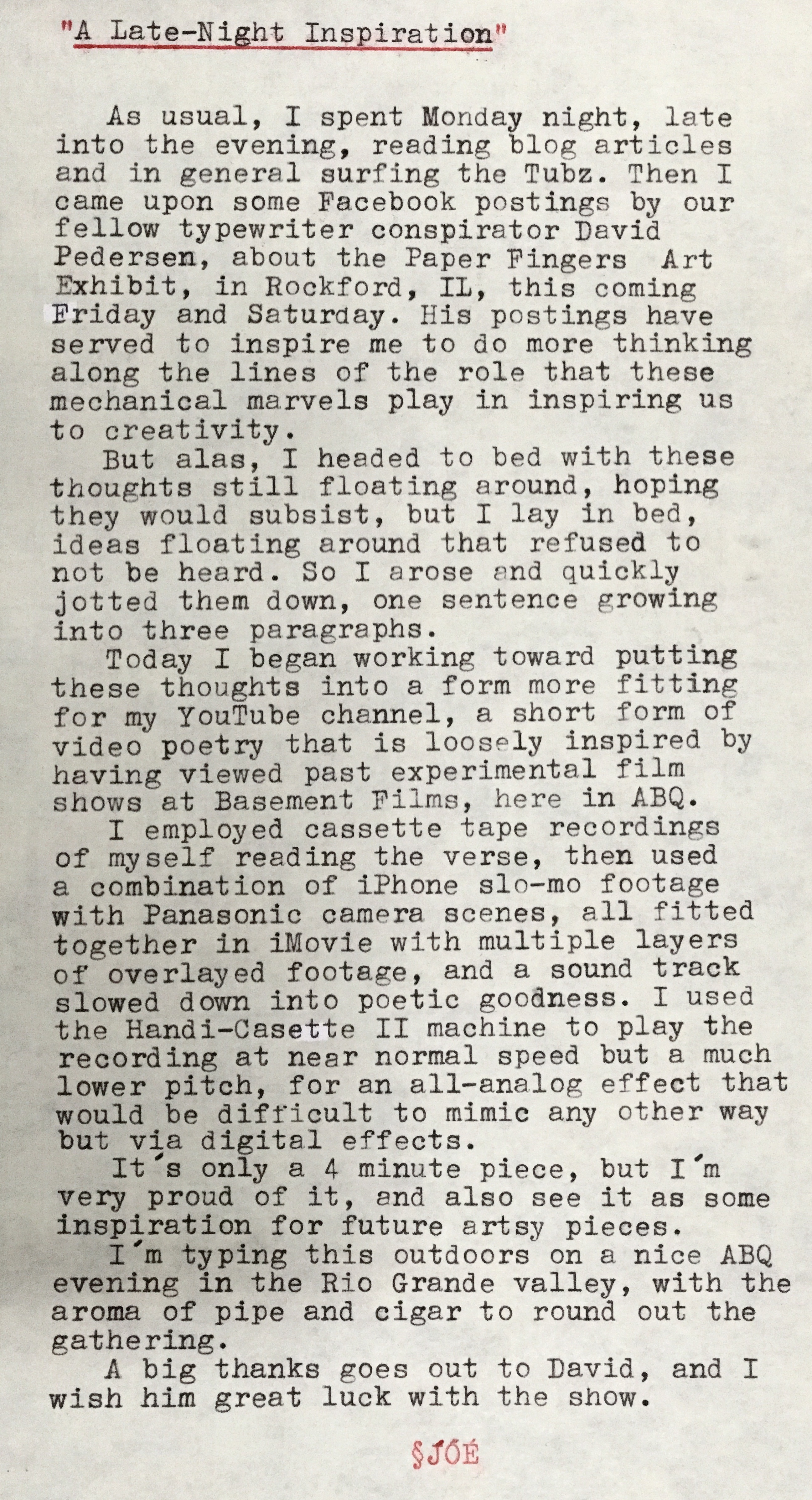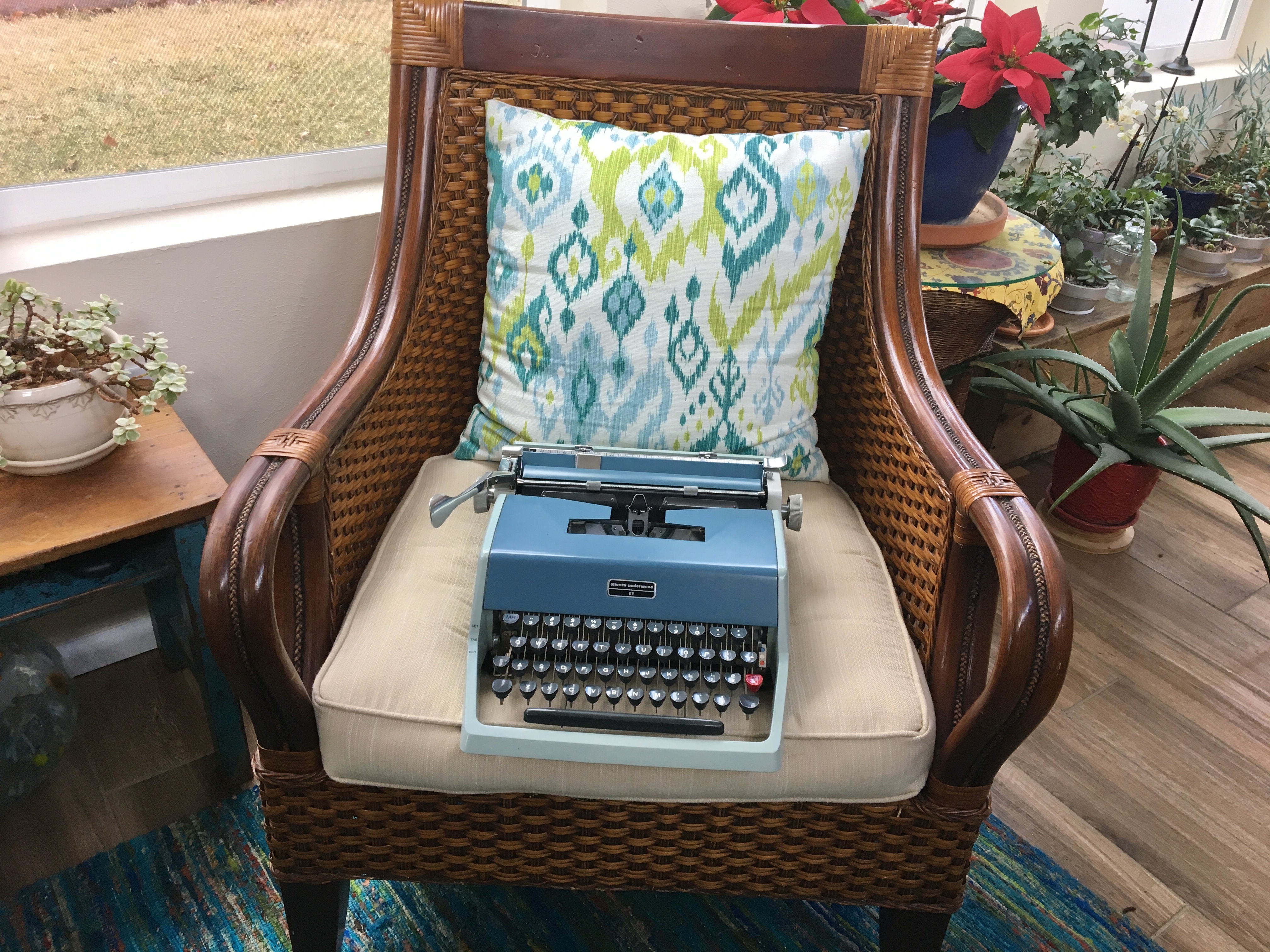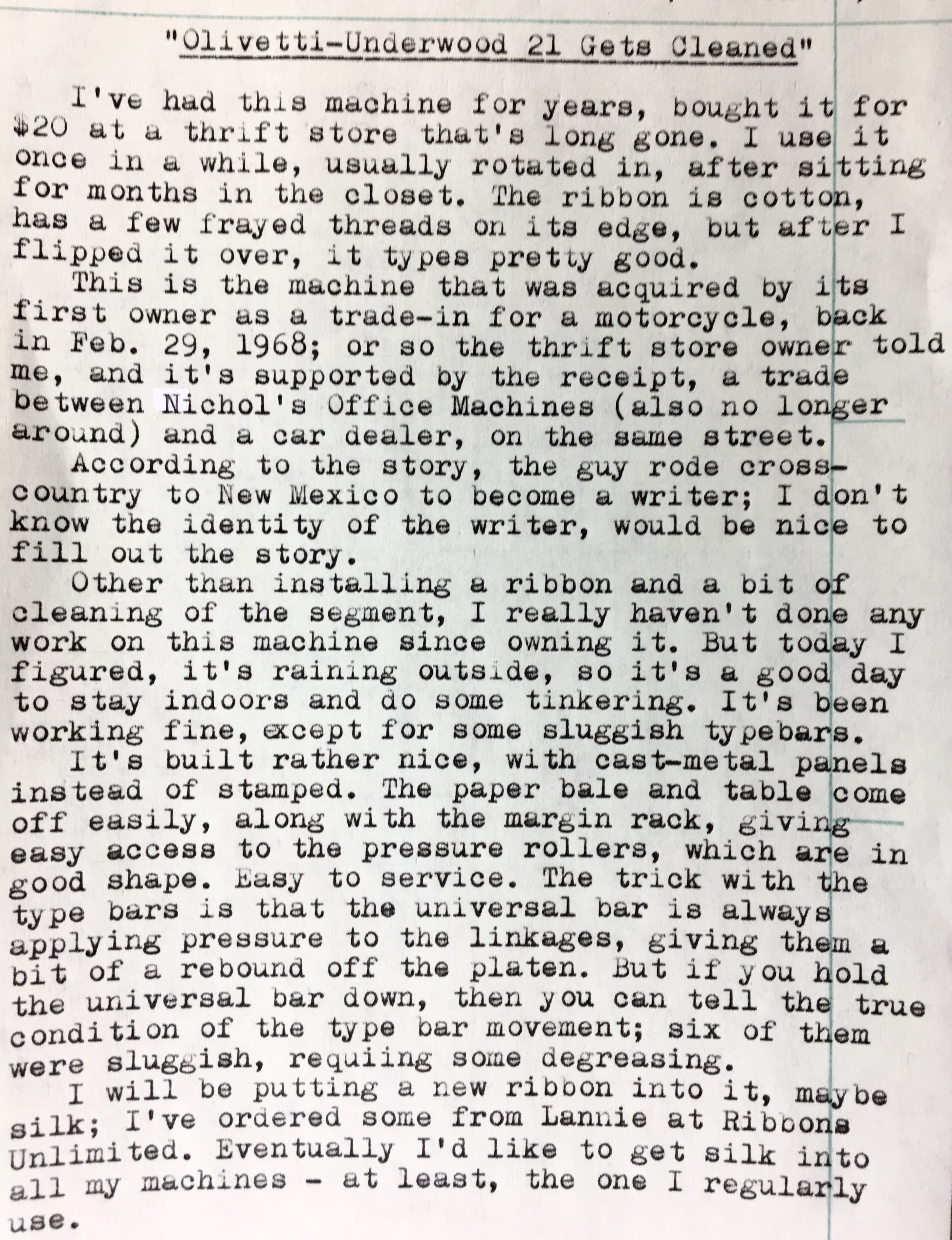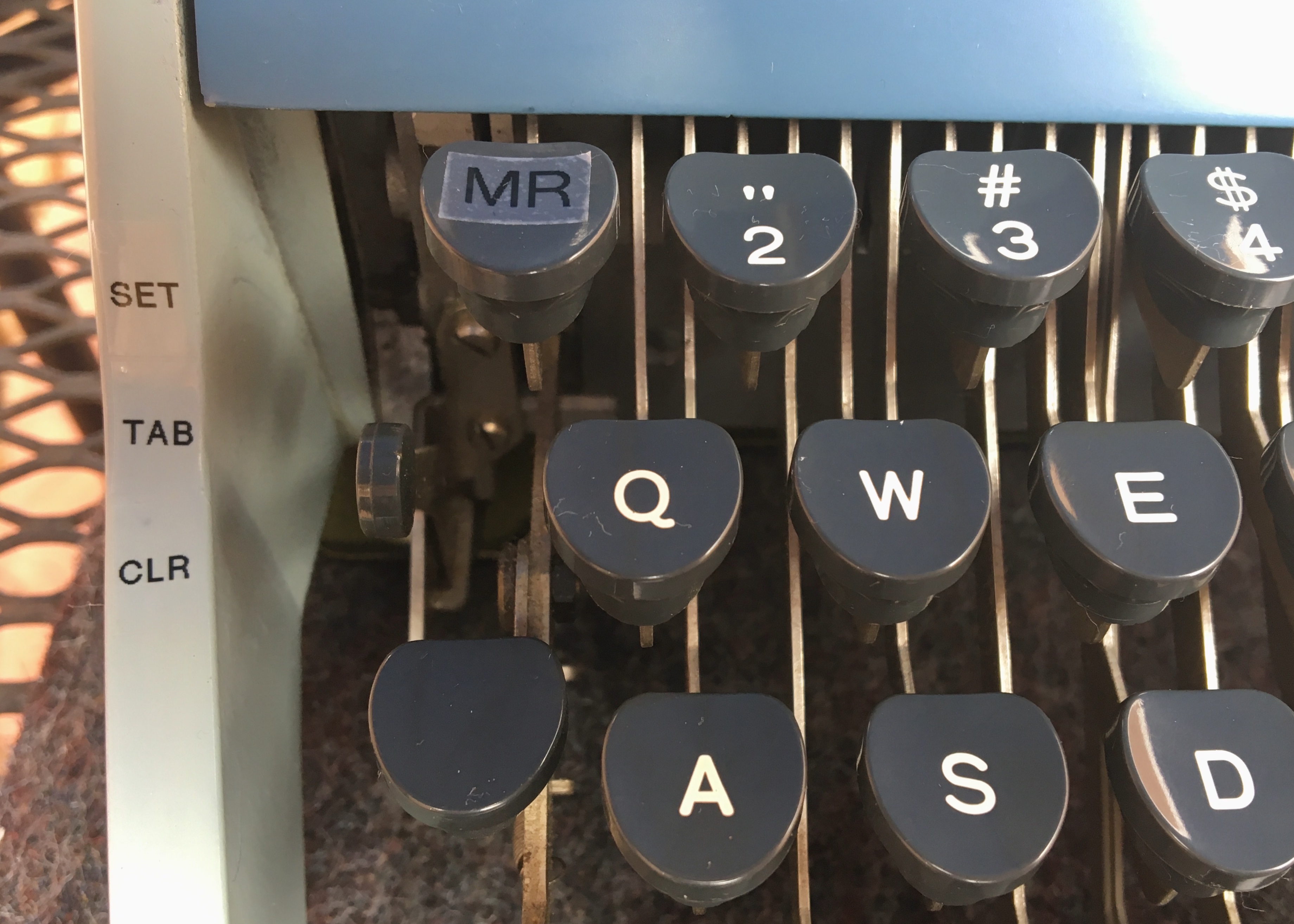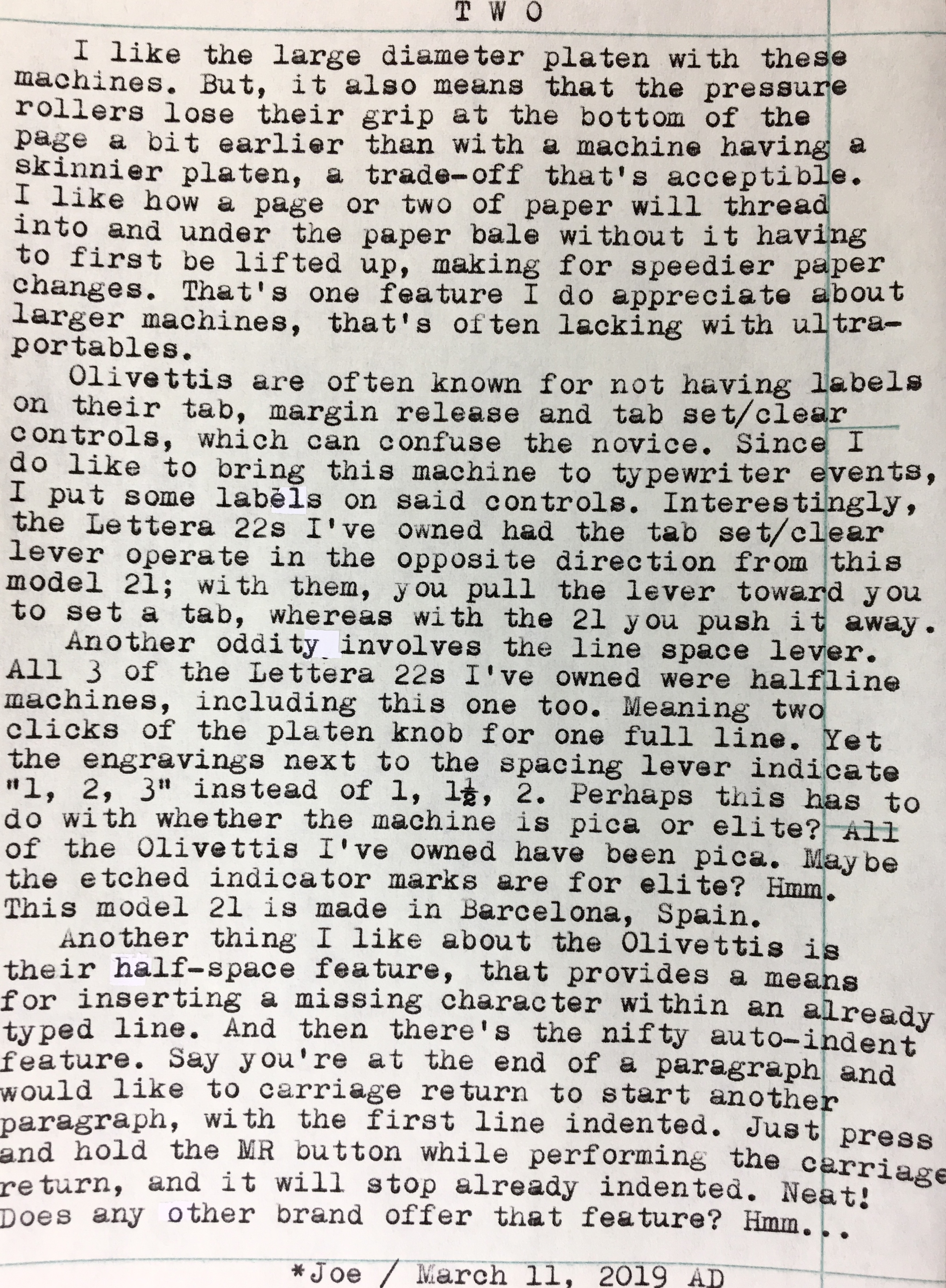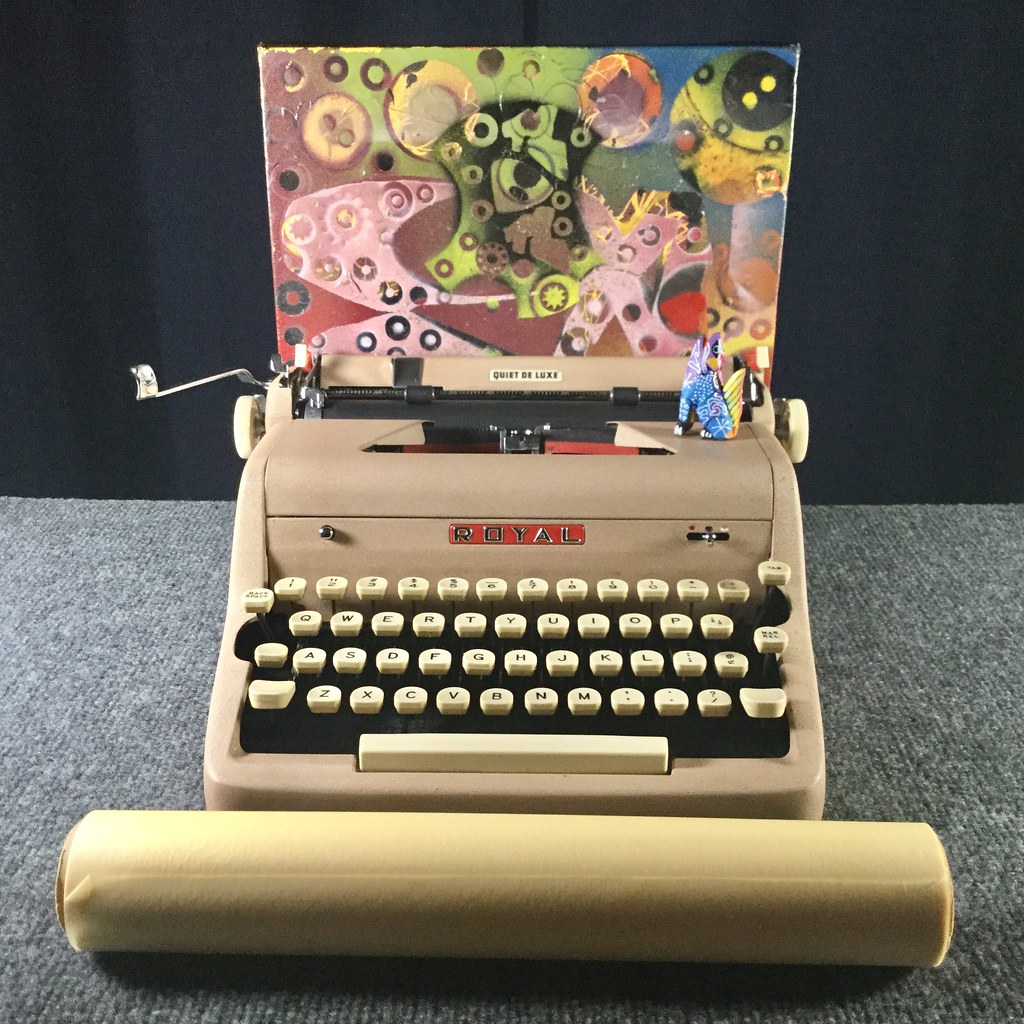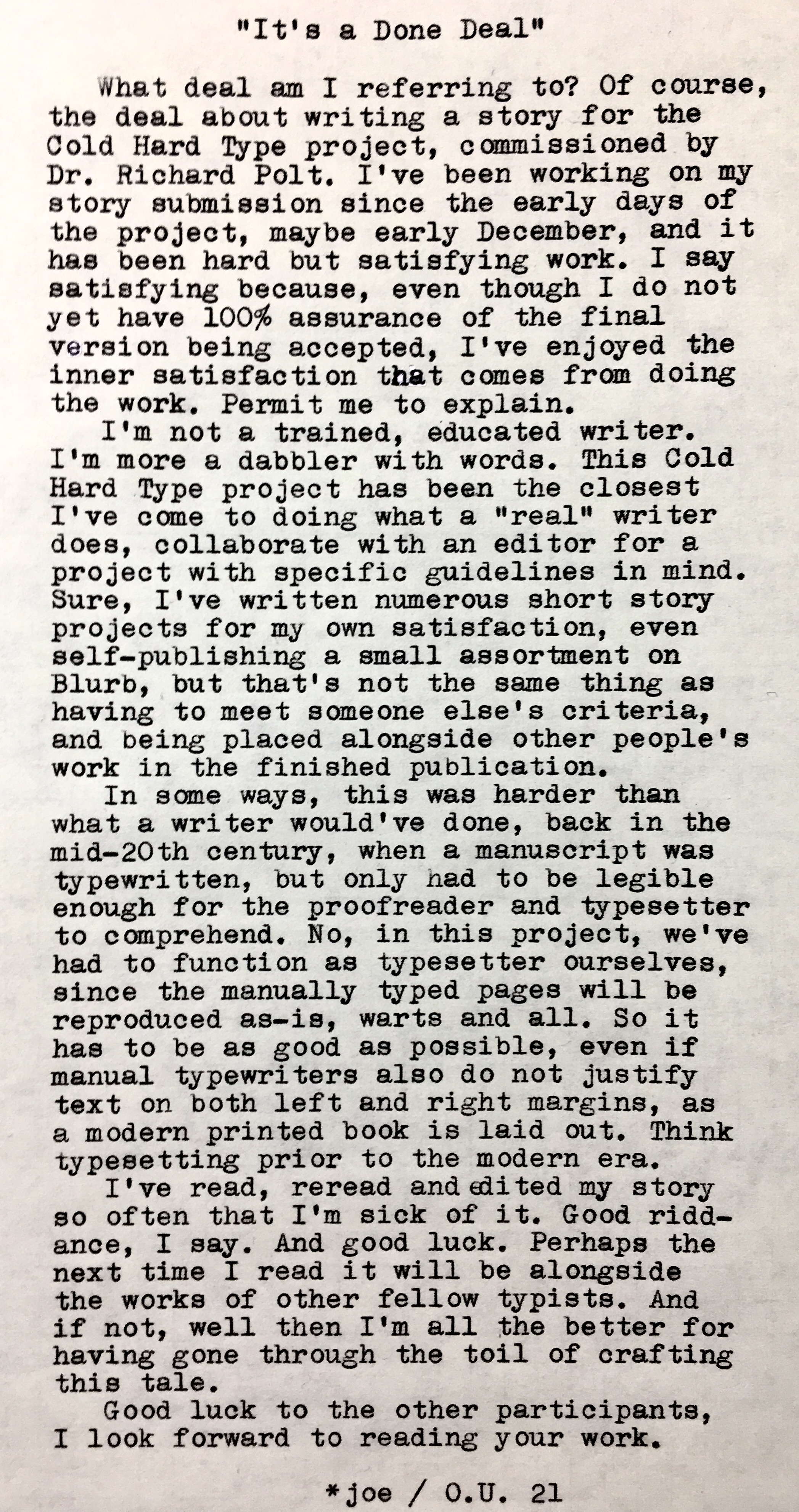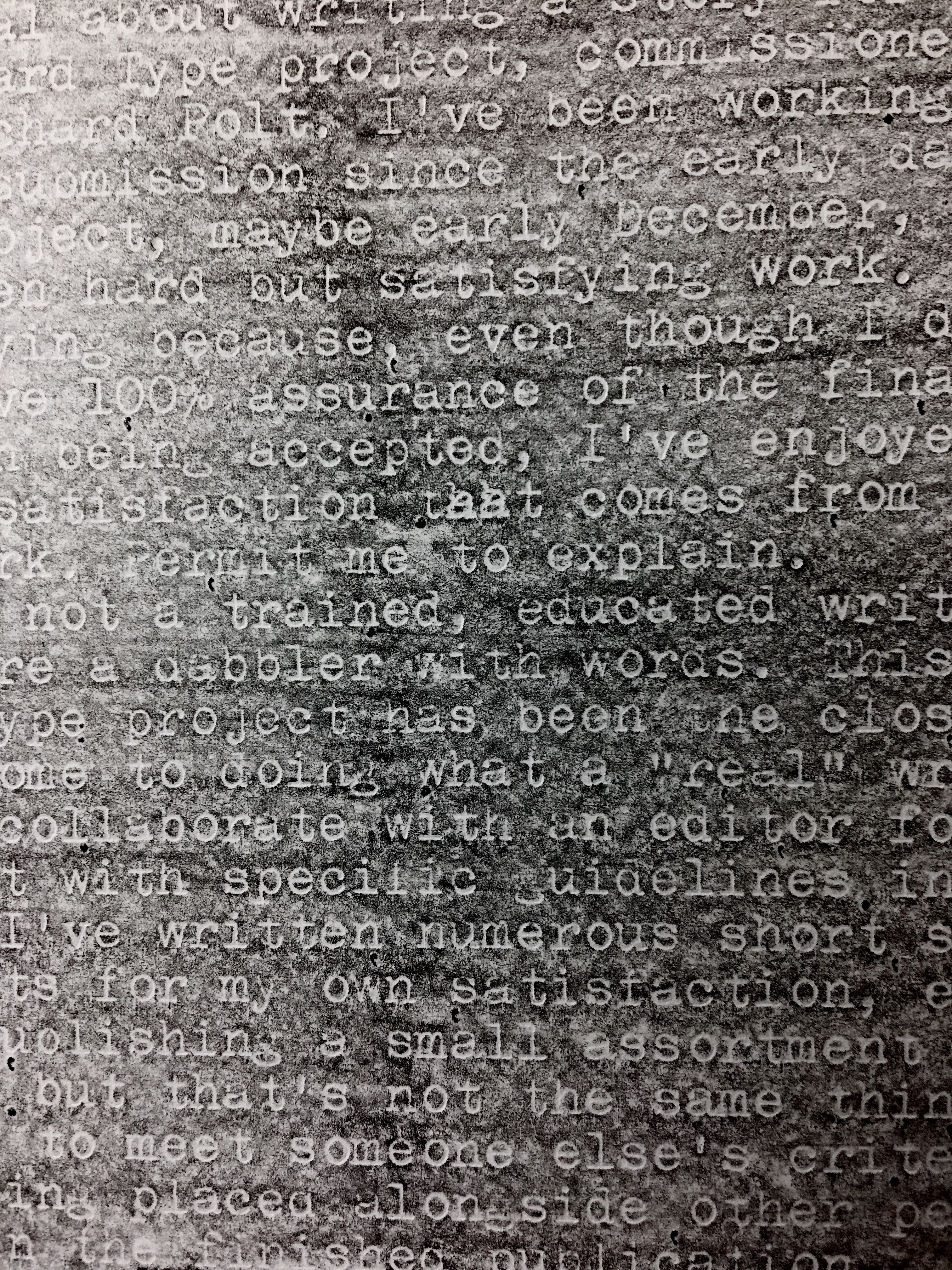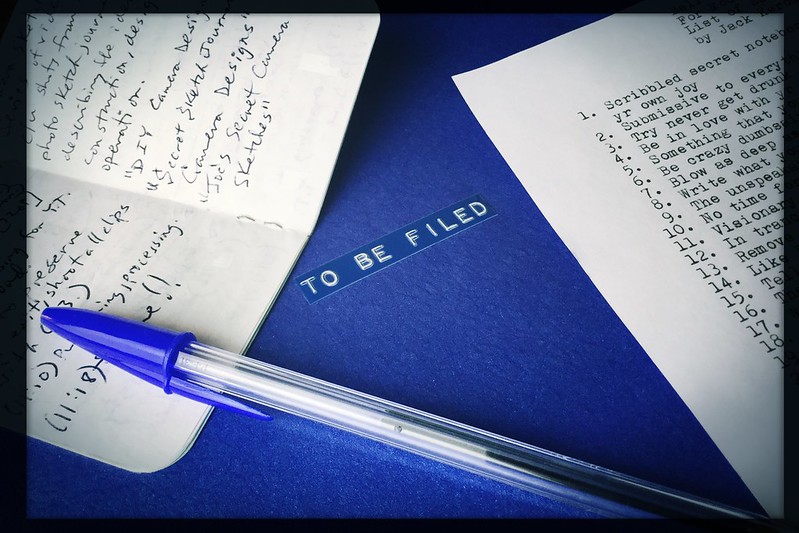
There's a pile on my desk. Well, not exactly. More like, the top surface of the desk is a series of piles, some well defined, others just a smattering of clutter. But there's a hidden order to this disorder. Because the secret to a disorganized desk is that as long as I can remember where something's at, then it counts as a form of organization. It doesn't have to be in any kind of sequential order, like alphabetical or thematic. Often, the piles accumulate organically, over time; this one thing should remain in this part of the desk, in this pile, because that's where it's been, long enough for me to remember that there is where I can find it. Move it to somewhere else and it's lost. So piles of clutter can function as a memory map, a geography of the mind. I figured, when thinking about this, that perhaps we'd go on a little hike around my desk. Get on your good shoes, and bring a water bottle.
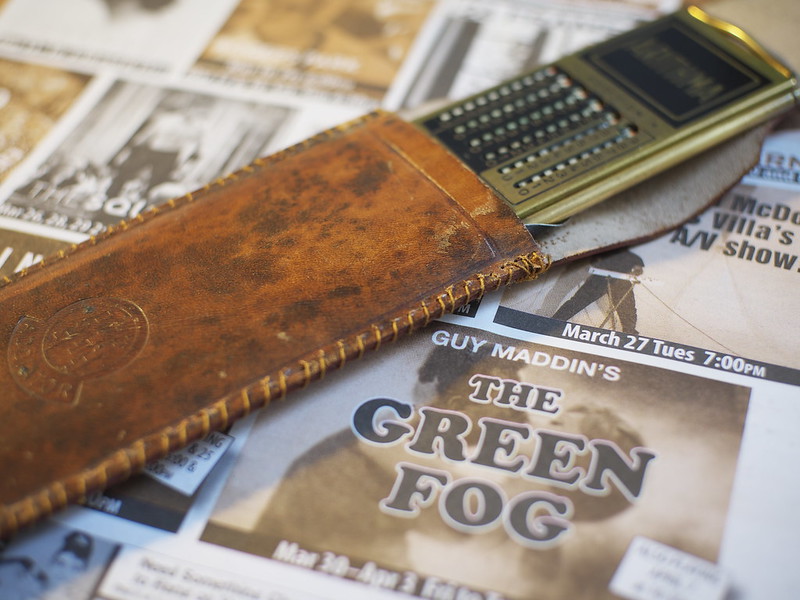
The desk is a corner unit, faux cherrywood finish, purchased some years ago at
Tema, the local Scandinavian furniture outlet. On the left side is a shelf unit, while under the left side is a two-drawer file cabinet on wheels. There're things in the filing cabinet that I haven't seen in years, arranged in a horizontal assemblage of file folders. Because - and this is another of those secrets to desktop clutter - a pile on one's desk is merely a file in the making. Take a pile: it's a vertical assemblage of papers, each arrayed horizontally. Now flip that pile so it's horizontal, with each paper vertical, and you have a file.
From pile to file: that's the secret of the 20th century office, the reason why men went to the moon, why we had burnt orange indoor/outdoor carpet and avacado-colored kitchen appliances. Do you remember those? I do. It's because of piles turned into files. A pile is a proto-file, a file in the making. Once the pile has gained some kind of stature, an outsized sense of importance, or has resided long enough upon one's desktop that it is considered important enough to warrant archiving, then it's flipped horizontal and awarded its own set of colored file folders, with the little tabs that will neatly mark its place in the hierarchy of other important files, until time and its detrimental quantum effects cause the tabs to fall off and then you don't know what's in the file drawer. Once the file drawer becomes overstuffed with files that have outlived their importance, they're relegated to file boxes, a cardboard simulacrum of the real metal thing, then stacked in some less than honorable location, like a damp basement or dusty garage, eventually to be sorted one final time by the former owner's heirs, and tossed into the rubbish bin of history. From piles, to files, to piles of boxes, to mountains of rubbish, that rot back into the soil, to restart the whole cycle over again.
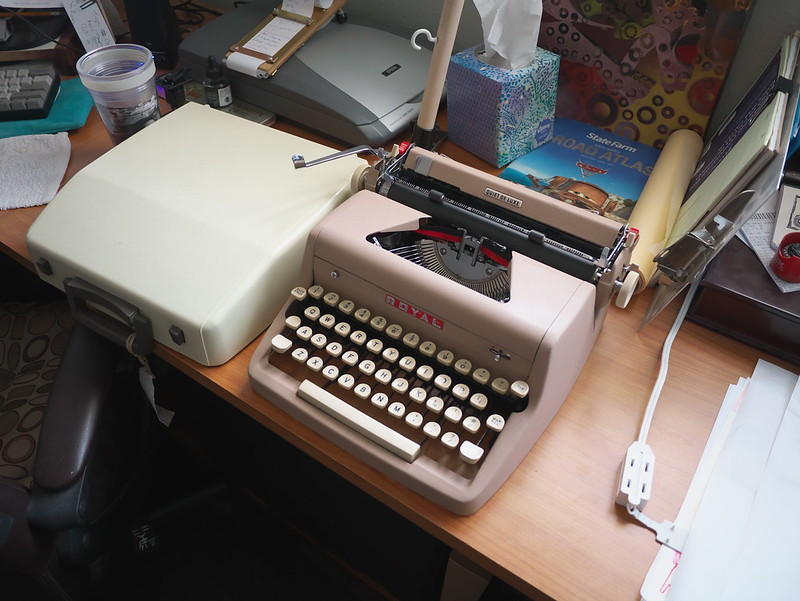
The shelf unit on the left side is a hodgepodge of things too important to throw out but not flat enough, like paper, to warrant storing in file folders. There's a whole set of Jandek CDs, that I acquired several decades ago, when I got engrossed in the enigmatic musician from Houston, after seeing the documentary,
Jandek on Corwood. I don't know what to do with them; they're too spacey to listen to on a regular basis, but too enigmatic to throw out. And I'd have to get some licensing permission to use them on my You Tube channel. I like collecting the enigmatic, they're like miniature discoveries that only you can make personally. And what's enigmatic to one person is ho-hum to another. I think what attracts me to this CD collection is the memory of seeing that Jandek on Corwood documentary for the first time, at a
Basement Films show, here in Albuquerque's south valley, one evening, years ago.
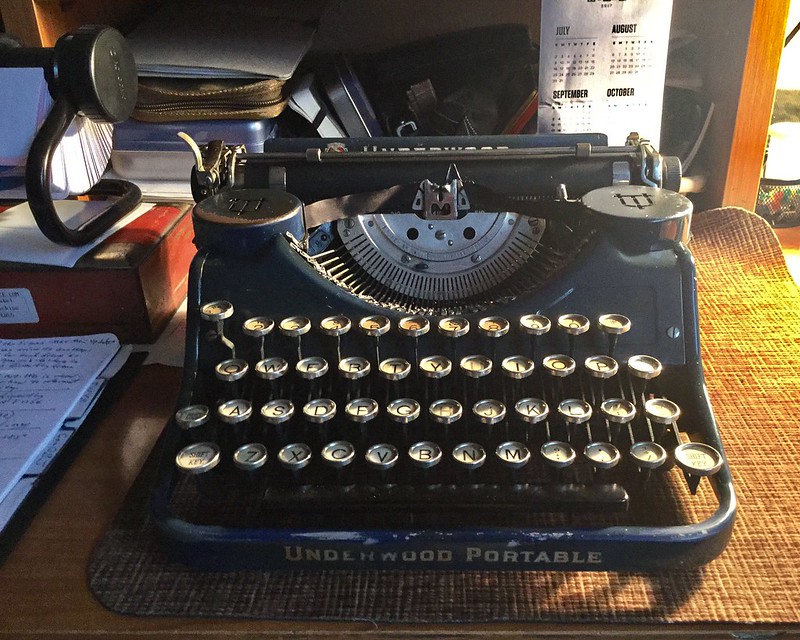
There are other mysterious CDs on this same shelf, many of them software, things long obsolete or uninteresting to me. I also know that I have more of the same thing in a bin somewhere else in the house. Below the shelf unit, on the desktop underneath, is a pile of half-used notebooks that I've promised myself to finish, and in front of that several important piles: a stack of pen-pal correspondence that I've yet to deal with; a smaller stack of papers from a cryptography project left unfinished; a notebook binder for the ABQwerty Type Writer Society; several notepad binders that I sporadically use; and a micro-cassette dictation machine that I promised to use more often but haven't.
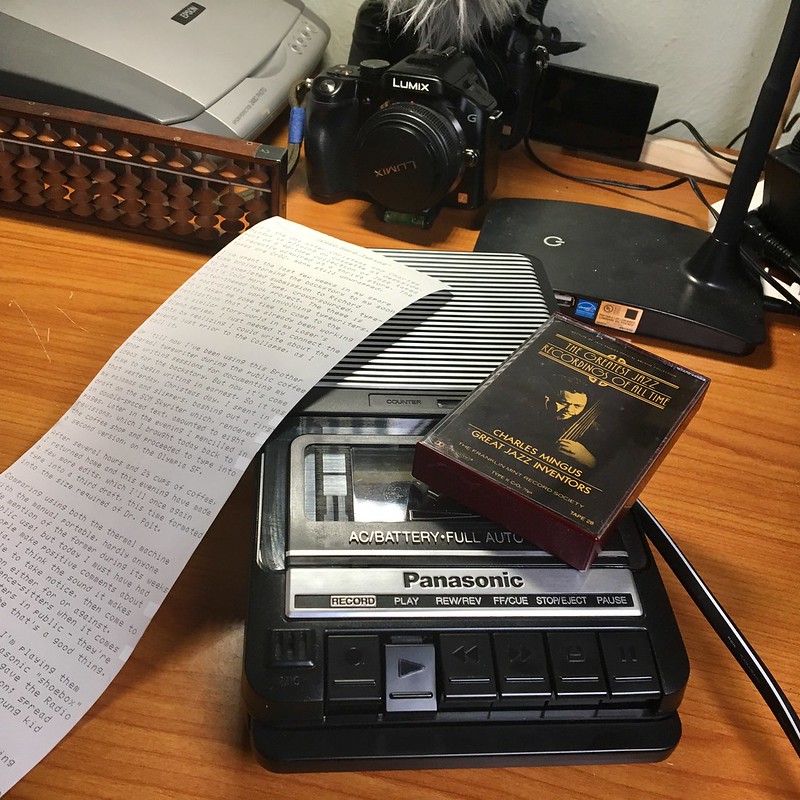
The right hand half of the shelf unit is even more complex: a horizontal array of small- and medium-sized notebooks awaiting usage; my fountain pen ink bottles and accessories; a paper clip container; a small box with several pocket calculators; several lenses of interest. That's the top shelf. The next one down has an assortment of more notebooks and office supply stuff, along with my Rolodex and more miscellany. On the bottom is a rectangular basket with odds and ends deemed too important to toss but not important enough to deal with otherwise. Several more calculators, some notebooks, an archive of index card notes (the "
hipster PDA"; a dead
Sony Clie Palm-OS PDA; and other stuff too random to mention. On the desktop in front of the basket, next to the other piles, is my main video journal book, where I document the details of each video I make.

The center of the corner unit contains my Mac Mini, monitor, trackball, 60% mechanical keyboard and external hard drives, along with an assemblage of pencil sharpeners, pencils and pens, calculator, USB thumb drive storage - each in their precise location. To the right of the monitor is my Epson flatbed scanner, atop which is a pile of notebooks and film sleeves containing unfinished projects, and which I have to move every time I want to use the scanner.
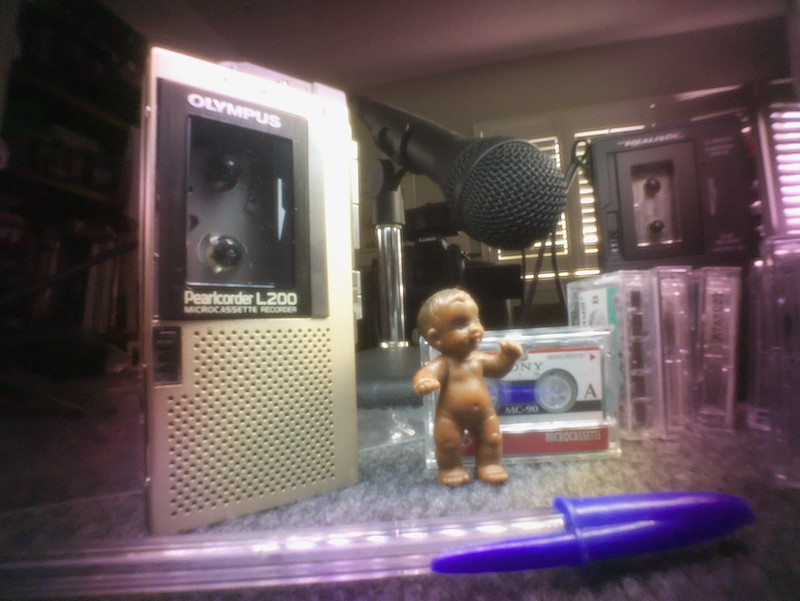
To the right of the scanner used to be blank space on the desk, that's now a place for a stack of cassette tapes, a can of compressed air and a desk lamp. On the very right end of the desk is my makeshift stereo system, in front of which is my current typewriter in usage: the Olivetti-Underwood 21, which has a thin pile sitting atop it, with an unfinished tape transcription threaded into the platen - another project needing to be finished.
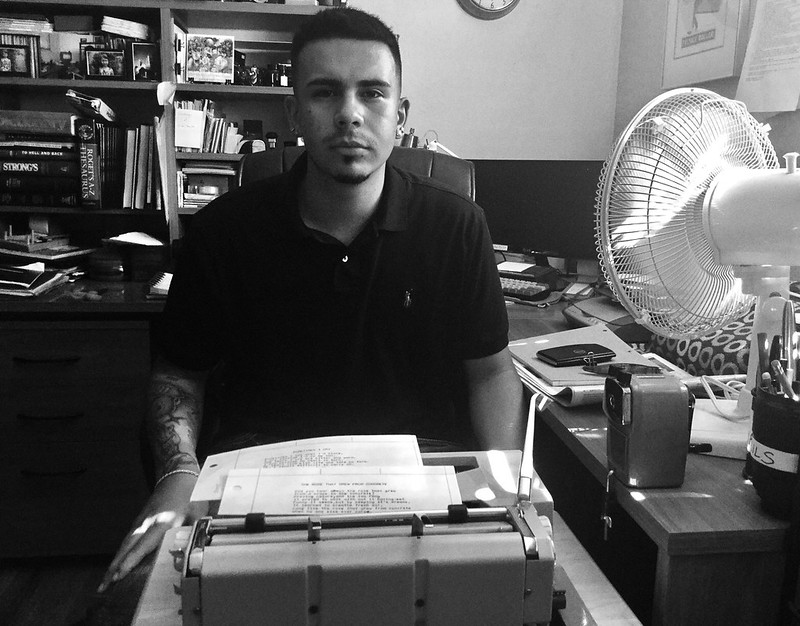
I didn't mention that atop the shelf unit on the left side of the desk is a row of books, and in front of them a number of film cameras, mostly now placed in plastic baggies but at one time thickly coated in dust; and behind the books a large Chinese Suan-Pan abacus.
We could go further, inventorying the messy bookcase to the left of the desk, or the even messier white plastic storage unit to the right of the desk, containing many decades-worth of photographic clutter. But we don't have to; I'm sure you get the idea.
Neither do you need to know about the short, rectangular stool under the desk on the right side, where resides our laser printer; or the plastic bin in front with reams of paper. Or the specially made storage shelf next to the printer where my IBM Selectric I sits under its plastic cover; or the Nakajima-made Olympus Report Deluxe typewriter, in its plastic case, in front of the IBM. Or all the wires and cords from my computer system, all neatly cable-tied to the underside of the corner unit, behind the monitor.
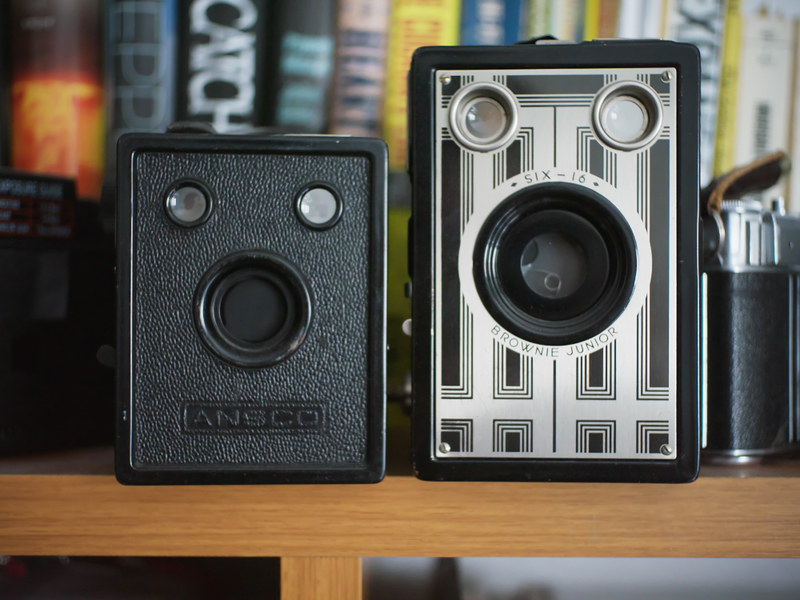
A neat desk is the sign of a boring, uninteresting life. Better to live with uncontained clutter, for it represents a mind replete with interests and avenues too numerous to actually explore in one working-person's lifetime, but which affords one a constant challenge: what project to tackle next?
My dear wife has been suggesting I take down the bookcase, shelf unit and corner desk, and in their place make a set of floor-to-ceiling shelves, then put a smaller desk under the window, to the right of where the current desk is located. Then I'd have more shelves for storage. And for typewriters. She's right, of course; but it would require disassembling my entire office, inventorying my entire assemblage of clutter, perhaps making piles into files. But in the long run, it'd be worth it. Maybe this year. Maybe.
See
this article about building a home-based library. Wonderful thoughts.
Labels: clutter, desk, piles-to-files
